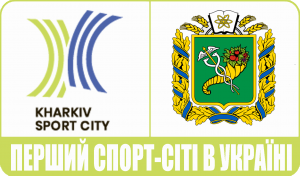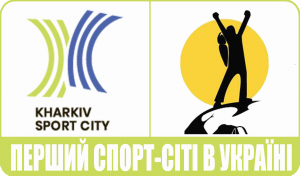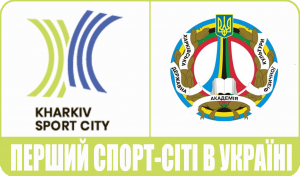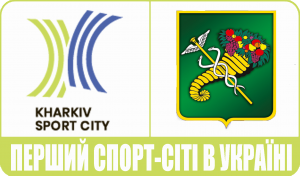History
History
From the Cossack settlement to the big industrial, cultural and scientific center
Kharkiv is an administrative center of historical geographical region of Ukraine called “Slobozhanshchina”.
The square of modern Kharkiv exceeds 300 sq. km, and the population is 1 million 450 thousand people. The territory of the city is a hilly plain with valleys, ravines etc. The climate is moderate-continental: the average temperature is +6,90, the coldest month is January (- 6,10), the hottest is July (+ 20,50).
The territory of modern Kharkiv became habitable in the ancient times. The archeological excavations testify that different nations were living here: the Scythians, the Sarmathians, Chernyakhovskie tribes, the Polovtsians.
It`s also known that in the second part of the I millenium B.C. this territory was inhabited by the East Slavonic tribe of the Severians. On the place of future Kharkiv the Slavs founded their colony already in the 8th century, which became known as Donets in the 10th century. Donets was not only a fortress but the center of trades (blacksmith's, jewellery and potter`s work etc.), the important point of transit trade. The first mentioning of Donets in a sripture is rendered to 1185. The episode from “The Tale of Igor's Campaign” – one of the most important work of Kiev Rus epoch – is connected with this town. Exactly here the Novgorod-siver prince Igor Sviatoslavovich, the hero of the poem, resided after the captivity. Donets was destroyed by the Batyi hordes in the middle of the 13th century.
There are several versions of the origin of the name “Kharkiv”. Some historians consider Kharkiv to be a transformed name from Sharukan’, the Polovets` capital, situated in this region, the others connect it with the name Khar’ko (Khariton), the leader of the first Ukrainian settlers in the middle of the 17th century. The majority of specialists think that the city received its name after Kharkiv river. Firstly this name was mentioned in “The book for big draft” composed in 1627 and still remains a hydronymic mystery.
The city foundators were Ukrainian cossacks and peasants, who escaped from national religious and social oppression of the Polish pans from Prydnieprovskaya and West Ukraine, especially during the period of liberation struggle of the Ukrainian people under the command of B. Khmelnitsky.
Ukrainian settlers started to make habitable unsettled territories, which were nominally a part of the Moscow state in the beginning of the 16th century. This land was called “The wild field” as it was devastated after the Mongol and Tatar raids.
Russian settlers originated here simultaniously with the Ukrainians. Slobozhanskaya subculture formed in the result of interaction of two migrational streams: the bigger, Ukrainian from the West and the smaller Russian from the North. In the 17-18th centuries Slobozhanshchina turned into a special historical geographical region of Ukraine with the distinctive colour of material and mental culture.
The first Kharkiv fortress was built according to Chercassy( e.g. Ukrainian) tradition. In 1656 Moscow tzar Aleksey Mikhailovich issued a decree about the creation of a separate Kharkiv province. The fortress that appeared on the place where Lopan’ and Kharkiv rivers were merging, had 10 towers and the walls with more than one kilometre high. The oldest document, mentioning Kharkiv, is the tzar`s decree to Chuguev voivode Sukhotin about building of Kharkiv fortifications, has been dated to the 28th of March, 1656. Judging by the reply of the first Kharkiv voivode Selifontov in 1657 and nominal inventory in 1658 Kharkiv was already rather a big settlement. The inventory included 578 men and it’s possible to think that there were not less than 200 houses at that time.
Kharkiv became the center of Kharkiv cossack regiment. Ukrainian settlers brought typical cossack military and administrative order. Trade people started to settle near the fortress since the first years of its existance. There appeared the first settlements – Goncharovka, Zhuravlevka etc. It was an evidence of turning Kharkiv from an important border outpost into the crafts’ and trade center.
Podol – the region between the fortress and the Kharkiv river was occupied by the beginning of the 18th century; and in the 30-40-ss when the threat of the attack of the Crimean and Nogayan Tatars had passed, the building process stepped over Lopan` and Kharkiv rivers. The city had near 1 thousand yards and a lot of different social buildings. Among six biggest fairs of Slobozhanshchina four of them were passing in Kharkiv: Uspenskaya, Creshchenskaya, Troitskaya, Pokrovskaya.
The social life of the city also has changed. The regimental administrative city system was liquidated in 1765. The Slobodskaya Ukrainian province was created instead of Sloboda regiments.
During a long period of time Kharkiv refers to Belgorod eparchy. Slobodskaya Ukrainian eparchy with the center in Kharkiv was created in 1799. Among the first churches built in the city there was Uspenskaya church. Its building started in 1658. The modern temple was built in the 70s of the 18th century. In 1726 on the territory of Kharkiv fortress Pokrovsky monastery was founded. The monastery temple is considered to be the oldest in Kharkiv.
Kharkiv becomes a province city. The city council was established in 1785. Since 1734 the post service started to work, since 1739 there appeared the first doctor, in 1778 the first drugstore was opened. All this changes a little the way of people’s life. However during the whole century farming remains their main occupation (about 70% of the population). The development of crafts and trading explains the names of streets and lanes appeared at that time: Chebotarskaya, Rymarskaya, Shlyapny, Stolyarny, Slesarny.
Kharkiv became an educational center already in the 18th century.
Kharkiv college (slavonic latin school received such name in 1731, transferred from Bielgorod in 1726) became the second important educational esteblishment in Ukraine after Kyiv - Mohyla Academy. The full course of sciences was taught here. The college library became the first in the city and contained 5 000 volumes by the 40-s of the 19th century.
At the beginning of the 19th century Kharkiv was developing not only as trading but also as an industrial center. By 1897 more than 70 enterprises existed here: mills, tallow-boileries, distilleries, tanneries. Till the middle of the 19th century city industry mostly had a handicraft character and trading and processing of farm products were remaining the main economy directions. Since the second part of the 19th century in connection with the liquidation of serfdom and the rapid development of Donetsk and Krivoi Rog region, the city had turned into one of the largest economical centers of the Russian Empire. In the middle of the century Kharkiv counted more than 30 000 inhabitans. The development of railway transport was the factor that had direct influence on the city evolution. In 1869 there was opened the main line that connected the city with Moscow, later with Donbass, Kiev and with the ports of the Black and Azov seas. The railway carriage repair was developing in the city, the first machines were constructed in 1897 by the Kharkiv steam-locomotive-building works. Gradually the city interprises started to produce different goods: from the agricultural machines to the engines. So, Kharkiv became the supplier of agricultural technics to the empire market. The biggest amount of such production was manufactured by Gelferich-Sade plant, built in 1882.
Covering the city with stone started in 1828. In 1871 the gas lighting appeared on the city streets, in 1881 the first water-supply was brought into operation. In 1882 the first line of city equestrian railway road was built that existed till 1918. At the end of the 19th century the first electric power station was built in the city that gave a possibility to electrify public transport. The first electric tram appeared on the city streets in 1905. In 1888 Kharkiv became the second city in Ukraine provided with telephone.
In the second part of the 18th century Russian government tried to unify the educational system. The first main and small specialized public colleges appeared in 1788-1789 in Ukraine. The main specialized public college was opened in Kharkiv in 1789, and in 1805 it became a base of the established men gimnasium.
More and more educational establishments were appearing with the city’s growth. By the beginning of the 20th century there were 4 men gimnasiums, 2 women gimnasiums, 2 specialized schools, a theological seminary, several private gimnasiums and boarding schools, Institute for Noble Maidens, commercial specialized school, 5 high elementary colleges (in general there were 111 elementary schools in 1902).
A lot of events in cultural and scientific life of Kharkiv in the 19th century happened for the first time not only in Kharkiv but also in all Ukraine. The first province museum in Russia was opened in Kharkiv in 1886. It was the municipal art industrial museum.
The opening of one of the oldest in Russia and the first in Ukraine Kharkiv University on the 17th of January, 1805 was the event of great importance. V. N. Karazin was its founder. The University is a scientific and cultural center, it`s famous for the scientists, graduates and teachers: N. N. Beketov, V. Y. Danilevsky, N. F. Sumtsov, D. I. Bagaley etc. The University became the center of creation of scientific communities and associations: Philotechnics association (1811), Physical and Chemical Sciences (1873), Historian Philological association (1877), Mathematical association (1879), Juridical association (1901) etc. Here in 1910 it was the first time in the Russian Empire when the Doctor of History academic degree was given to a woman - A. Y. Efimenko. The Veterinary institute was opened in 1873, the Technological institute – in 1875. The Institute of agriculture and forestry was evacuated from New Aleksandria to Kharkiv in 1914.
So by the beginning of the 20th century Kharkiv became industrial, scientific and cultural center with great potential. The new age made its unexpected amendments in the development of the city. A lot of important events of Ukrainian history are connected with Kharkiv: January, 29th (Old Style), 1900 the first Ukrainian political party in Prydneprovskaya Ukraine – RUP(Revolutionary Ukrainian Party) was established there, on the 12th of December, 1917 the Soviet power was proclaimed. Rapid passing of economical processes caused sharpening of social contradictions. Already in the 70-80-ss of the 19th century Kharkiv became the center of populists’ movement. The spontaneous manifests of the workers took place there.
During the period of civil war Kharkiv endured red Bolshevist terror, raging of Denikin`s army, the results of intervention, and the nationalization.
The period of extensive reforms in different spheres of public life started at the beginning of 20-s. The administrative territorial structure of the city endured fundamental changes. On the 26th of January, 1919 it was decided to devide the city into three districts: Ivanovo-Lysogorsky, Petinsko-Zhuravliovsky, Osnovyansko-Holodnogorsky. The executive committees assumed the responsibility for guidance of all the parts of local public life. The names and the number of the districts changed very often. There were 8 of them by 1938 (generally they corresponded to the modern devision). The capital status was officialy assigned to Kharkiv in 1919.
Till the end of 1925 the city industrial enterprises were restored; new plants and factories underwent reconstruction and building. In 1940 the city industry exceeded the level of 1913 in 12 times.
The first radiostation in Ukraine started its work in 1924. There appeared ew working settlements: Artema, Kirova, tractorostroiteley, Krasny Octyabr’. The introduction of the heating system has started. The first trolley-bus line appeared in the city in 1939. The 20-30-ss was the period when the dense system of seven- year schools has appeared and the struggle against illiteracy started to develop. Kharkiv is also connected with the working period of the well-known pedagogue A. S. Makarenko. There appeared the new forms of out-of-school activities and in 1935 the first palace of pioneers was opened in Kharkiv. The conciderable changes took place in the system of higher education. After the reorganisation of the university there appeared the new establishements: the Medical institute and the National economy institute from 1921, the Law institute from 1937. Generally there were opened 23 higher educational establishments in 1930-1931.
In 1920-1930-ss different new scientific organizations and institutes started their work: the Ukrainian X-Ray Academy, the Institute of haematology and blood transfusion, the Ukrainian physical technical institute etc. The scientific and research work was conducted by the scientific communities, also the study of local history was developing.
In the first half of the 20th century the city was transformed due to emergence of the new monuments (in 1935 there was unvailed the best monument in the world to T. G. Shevchenko whose sculptor was M. G. Manizer); the works of “Kharkiv Rossi” – Beketov, architects Verevkin, Zhukov etc. The Gosprom building was constructed in the constructivism style in 1925-1927.
The cultural life of the city was also eventful. The National ukrainian drama theater “Berezil`” headed by Les` Kurbas moved in 1926 from Kiev to Kharkiv, the first performances were given by the Ukrainian musical comedy theater in 1929. 1932 was the year of establishing the Kharkiv organization of the Composers` Union of Ukraine, 1934 the year of establishing the Writers’ Union of Ukraine.
During the period of Stalin repressions and the World War II the city endured great loss. It became an object of special interest of the Hitler Germany and as the result, both parties struggled hard for its capturing. The city passed twice through many hands, went through occupation, starvation and destruction. By the moment of the final liberation 200 000 sq. m of living area were destroyed, all the municipal constructions were completely out of order. The major part of material values of Kharkiv enterprises was crushed in spite of the evacuation. By the 23rd of August, 1943 – the day of the city liberation – there were no working enterprises.
During the occupation period thousands of Kharkiv citizens were killed by fascists only for their political views, nationality or race, a lot of them were driven to Germany.
But even in such inhuman conditions the citizens tried to save and keep their cultural values.
Only during 21 months of occupation there were killed and tortured to death more than 256 000 people, 164 000 people were driven by force for works. Only 200 000 people out of 900 000 stayed in the city. The general material damage caused to the municipal economy of Kharkiv region, cultural establishments and separate people has made 33, 5 billions of roubles.
A lot of city streets are named after the defenders and liberators of the city: platoon of lieutenant P. N. Shironin, O. Yarosh, I. Tankopiya etc.
Selfless work on restoration of the city started right after liberation of Kharkiv. But only till the beginning of the 50-s the pre-war level of production was achieved. The production itself was becoming more modern. New plants and factories were opened: “Elektrotyazhmash”, “Road machines plant” etc. Today there are about 250 big enterprises in the city. According to these indexes Kharkiv is deservedly consedered to be the leading industrial center of Ukraine.
Kharkiv TV studio started its work in the middle of 50-s. In 1962 the population of the city approached 1 million and Kharkiv became the second city in Ukraine after Kiev with a population of one million or more.
The development of such housing areas as Pavlovo Pole, Alekseevka, Saltovka started in the 50-80-ss.
The first underground line was opened in Kharkiv in 1975 and now there are three of them.
Although the 1970-s – the 1st half of the 1980-s stepped into the history of the country as the stagnation period, the city achieved conciderable success in the development of economy, science, culture.
The politics of reforming called “perestroika” started to be implemented in 1985. The proclamation of independent Ukrainian State in 1991 was the culmination of democratic processes in the society. It gave the new state a possibility to create its own future independently. The city life became the reflection of the new processes in the society. For example, in connection with the adoption of the new Constitution of Ukraine by Verkhovna Rada, Soviet Ukraine square was renamed into Constitution square. As a result of privatisation there appeared a lot of private enterprises, schools etc. on the map, the cultural life of the citizens became more various. However its basis consisted in the esteblishments and organizations having been esteblished in the post-war period.
In the 40-50-ss there were esteblished the Scientific research institute of selection and genetics and the Scientific research institute of organization and mechanization of miner`s building. The Institute of public catering, the Institute of criobiology and criomedecine, the North-eastern center of the Academy of Sciences of the USSR etc. were esteblished in the 60-70-ss. And today the city is proud of its scientists, namely L. T. Malaya, A. V. Pogorelov etc. The biographies of more than 100 academicians and correspondent members of the NAS of Ukraine are connected only with the Kharkiv State University, being National now. Technical and military higher educational establishments of the city have made a big contribution into the development of science and technology.
Kharkiv citizens and city guests have a possibility to visit numerous theatres, a circus (in 1974 it recieved a new building culculated on 2300 people), a planetarium (opened in 1957). The various festivals and competitions were conducted in the city. In 1992 according to the UNESCO decision the 70th anniversary of “Berezil`” theater was celebrated, and in 1993 the international festival “Berezil`-93” was conducted.
In the last years there were conducted such festivals as “Ukrainska toloka”, festivals in the memory of K. I. Shulzhenko and pianist V. Kraynev.
The history of Kharkiv makes three and a half centuries. It`s full of beautiful and tragical events. The city was admited to the International League of Historical Cities. Its development was and will remain one of the key points in the life of the entire state – the independent Ukraine.
Sergey Kudelko
Candidate of History, professor,
Director of the Local history Center
V.N. Karazin Kharkiv National University
History
From the Cossack settlement to the big industrial, cultural and scientific center
Kharkiv is an administrative center of historical geographical region of Ukraine called “Slobozhanshchina”.
The square of modern Kharkiv exceeds 300 sq. km, and the population is 1 million 450 thousand people. The territory of the city is a hilly plain with valleys, ravines etc. The climate is moderate-continental: the average temperature is +6,90, the coldest month is January (- 6,10), the hottest is July (+ 20,50).
The territory of modern Kharkiv became habitable in the ancient times. The archeological excavations testify that different nations were living here: the Scythians, the Sarmathians, Chernyakhovskie tribes, the Polovtsians.
It`s also known that in the second part of the I millenium B.C. this territory was inhabited by the East Slavonic tribe of the Severians. On the place of future Kharkiv the Slavs founded their colony already in the 8th century, which became known as Donets in the 10th century. Donets was not only a fortress but the center of trades (blacksmith's, jewellery and potter`s work etc.), the important point of transit trade. The first mentioning of Donets in a sripture is rendered to 1185. The episode from “The Tale of Igor's Campaign” – one of the most important work of Kiev Rus epoch – is connected with this town. Exactly here the Novgorod-siver prince Igor Sviatoslavovich, the hero of the poem, resided after the captivity. Donets was destroyed by the Batyi hordes in the middle of the 13th century.
There are several versions of the origin of the name “Kharkiv”. Some historians consider Kharkiv to be a transformed name from Sharukan’, the Polovets` capital, situated in this region, the others connect it with the name Khar’ko (Khariton), the leader of the first Ukrainian settlers in the middle of the 17th century. The majority of specialists think that the city received its name after Kharkiv river. Firstly this name was mentioned in “The book for big draft” composed in 1627 and still remains a hydronymic mystery.
The city foundators were Ukrainian cossacks and peasants, who escaped from national religious and social oppression of the Polish pans from Prydnieprovskaya and West Ukraine, especially during the period of liberation struggle of the Ukrainian people under the command of B. Khmelnitsky.
Ukrainian settlers started to make habitable unsettled territories, which were nominally a part of the Moscow state in the beginning of the 16th century. This land was called “The wild field” as it was devastated after the Mongol and Tatar raids.
Russian settlers originated here simultaniously with the Ukrainians. Slobozhanskaya subculture formed in the result of interaction of two migrational streams: the bigger, Ukrainian from the West and the smaller Russian from the North. In the 17-18th centuries Slobozhanshchina turned into a special historical geographical region of Ukraine with the distinctive colour of material and mental culture.
The first Kharkiv fortress was built according to Chercassy( e.g. Ukrainian) tradition. In 1656 Moscow tzar Aleksey Mikhailovich issued a decree about the creation of a separate Kharkiv province. The fortress that appeared on the place where Lopan’ and Kharkiv rivers were merging, had 10 towers and the walls with more than one kilometre high. The oldest document, mentioning Kharkiv, is the tzar`s decree to Chuguev voivode Sukhotin about building of Kharkiv fortifications, has been dated to the 28th of March, 1656. Judging by the reply of the first Kharkiv voivode Selifontov in 1657 and nominal inventory in 1658 Kharkiv was already rather a big settlement. The inventory included 578 men and it’s possible to think that there were not less than 200 houses at that time.
Kharkiv became the center of Kharkiv cossack regiment. Ukrainian settlers brought typical cossack military and administrative order. Trade people started to settle near the fortress since the first years of its existance. There appeared the first settlements – Goncharovka, Zhuravlevka etc. It was an evidence of turning Kharkiv from an important border outpost into the crafts’ and trade center.
Podol – the region between the fortress and the Kharkiv river was occupied by the beginning of the 18th century; and in the 30-40-ss when the threat of the attack of the Crimean and Nogayan Tatars had passed, the building process stepped over Lopan` and Kharkiv rivers. The city had near 1 thousand yards and a lot of different social buildings. Among six biggest fairs of Slobozhanshchina four of them were passing in Kharkiv: Uspenskaya, Creshchenskaya, Troitskaya, Pokrovskaya.
The social life of the city also has changed. The regimental administrative city system was liquidated in 1765. The Slobodskaya Ukrainian province was created instead of Sloboda regiments.
During a long period of time Kharkiv refers to Belgorod eparchy. Slobodskaya Ukrainian eparchy with the center in Kharkiv was created in 1799. Among the first churches built in the city there was Uspenskaya church. Its building started in 1658. The modern temple was built in the 70s of the 18th century. In 1726 on the territory of Kharkiv fortress Pokrovsky monastery was founded. The monastery temple is considered to be the oldest in Kharkiv.
Kharkiv becomes a province city. The city council was established in 1785. Since 1734 the post service started to work, since 1739 there appeared the first doctor, in 1778 the first drugstore was opened. All this changes a little the way of people’s life. However during the whole century farming remains their main occupation (about 70% of the population). The development of crafts and trading explains the names of streets and lanes appeared at that time: Chebotarskaya, Rymarskaya, Shlyapny, Stolyarny, Slesarny.
Kharkiv became an educational center already in the 18th century.
Kharkiv college (slavonic latin school received such name in 1731, transferred from Bielgorod in 1726) became the second important educational esteblishment in Ukraine after Kyiv - Mohyla Academy. The full course of sciences was taught here. The college library became the first in the city and contained 5 000 volumes by the 40-s of the 19th century.
At the beginning of the 19th century Kharkiv was developing not only as trading but also as an industrial center. By 1897 more than 70 enterprises existed here: mills, tallow-boileries, distilleries, tanneries. Till the middle of the 19th century city industry mostly had a handicraft character and trading and processing of farm products were remaining the main economy directions. Since the second part of the 19th century in connection with the liquidation of serfdom and the rapid development of Donetsk and Krivoi Rog region, the city had turned into one of the largest economical centers of the Russian Empire. In the middle of the century Kharkiv counted more than 30 000 inhabitans. The development of railway transport was the factor that had direct influence on the city evolution. In 1869 there was opened the main line that connected the city with Moscow, later with Donbass, Kiev and with the ports of the Black and Azov seas. The railway carriage repair was developing in the city, the first machines were constructed in 1897 by the Kharkiv steam-locomotive-building works. Gradually the city interprises started to produce different goods: from the agricultural machines to the engines. So, Kharkiv became the supplier of agricultural technics to the empire market. The biggest amount of such production was manufactured by Gelferich-Sade plant, built in 1882.
Covering the city with stone started in 1828. In 1871 the gas lighting appeared on the city streets, in 1881 the first water-supply was brought into operation. In 1882 the first line of city equestrian railway road was built that existed till 1918. At the end of the 19th century the first electric power station was built in the city that gave a possibility to electrify public transport. The first electric tram appeared on the city streets in 1905. In 1888 Kharkiv became the second city in Ukraine provided with telephone.
In the second part of the 18th century Russian government tried to unify the educational system. The first main and small specialized public colleges appeared in 1788-1789 in Ukraine. The main specialized public college was opened in Kharkiv in 1789, and in 1805 it became a base of the established men gimnasium.
More and more educational establishments were appearing with the city’s growth. By the beginning of the 20th century there were 4 men gimnasiums, 2 women gimnasiums, 2 specialized schools, a theological seminary, several private gimnasiums and boarding schools, Institute for Noble Maidens, commercial specialized school, 5 high elementary colleges (in general there were 111 elementary schools in 1902).
A lot of events in cultural and scientific life of Kharkiv in the 19th century happened for the first time not only in Kharkiv but also in all Ukraine. The first province museum in Russia was opened in Kharkiv in 1886. It was the municipal art industrial museum.
The opening of one of the oldest in Russia and the first in Ukraine Kharkiv University on the 17th of January, 1805 was the event of great importance. V. N. Karazin was its founder. The University is a scientific and cultural center, it`s famous for the scientists, graduates and teachers: N. N. Beketov, V. Y. Danilevsky, N. F. Sumtsov, D. I. Bagaley etc. The University became the center of creation of scientific communities and associations: Philotechnics association (1811), Physical and Chemical Sciences (1873), Historian Philological association (1877), Mathematical association (1879), Juridical association (1901) etc. Here in 1910 it was the first time in the Russian Empire when the Doctor of History academic degree was given to a woman - A. Y. Efimenko. The Veterinary institute was opened in 1873, the Technological institute – in 1875. The Institute of agriculture and forestry was evacuated from New Aleksandria to Kharkiv in 1914.
So by the beginning of the 20th century Kharkiv became industrial, scientific and cultural center with great potential. The new age made its unexpected amendments in the development of the city. A lot of important events of Ukrainian history are connected with Kharkiv: January, 29th (Old Style), 1900 the first Ukrainian political party in Prydneprovskaya Ukraine – RUP(Revolutionary Ukrainian Party) was established there, on the 12th of December, 1917 the Soviet power was proclaimed. Rapid passing of economical processes caused sharpening of social contradictions. Already in the 70-80-ss of the 19th century Kharkiv became the center of populists’ movement. The spontaneous manifests of the workers took place there.
During the period of civil war Kharkiv endured red Bolshevist terror, raging of Denikin`s army, the results of intervention, and the nationalization.
The period of extensive reforms in different spheres of public life started at the beginning of 20-s. The administrative territorial structure of the city endured fundamental changes. On the 26th of January, 1919 it was decided to devide the city into three districts: Ivanovo-Lysogorsky, Petinsko-Zhuravliovsky, Osnovyansko-Holodnogorsky. The executive committees assumed the responsibility for guidance of all the parts of local public life. The names and the number of the districts changed very often. There were 8 of them by 1938 (generally they corresponded to the modern devision). The capital status was officialy assigned to Kharkiv in 1919.
Till the end of 1925 the city industrial enterprises were restored; new plants and factories underwent reconstruction and building. In 1940 the city industry exceeded the level of 1913 in 12 times.
The first radiostation in Ukraine started its work in 1924. There appeared ew working settlements: Artema, Kirova, tractorostroiteley, Krasny Octyabr’. The introduction of the heating system has started. The first trolley-bus line appeared in the city in 1939. The 20-30-ss was the period when the dense system of seven- year schools has appeared and the struggle against illiteracy started to develop. Kharkiv is also connected with the working period of the well-known pedagogue A. S. Makarenko. There appeared the new forms of out-of-school activities and in 1935 the first palace of pioneers was opened in Kharkiv. The conciderable changes took place in the system of higher education. After the reorganisation of the university there appeared the new establishements: the Medical institute and the National economy institute from 1921, the Law institute from 1937. Generally there were opened 23 higher educational establishments in 1930-1931.
In 1920-1930-ss different new scientific organizations and institutes started their work: the Ukrainian X-Ray Academy, the Institute of haematology and blood transfusion, the Ukrainian physical technical institute etc. The scientific and research work was conducted by the scientific communities, also the study of local history was developing.
In the first half of the 20th century the city was transformed due to emergence of the new monuments (in 1935 there was unvailed the best monument in the world to T. G. Shevchenko whose sculptor was M. G. Manizer); the works of “Kharkiv Rossi” – Beketov, architects Verevkin, Zhukov etc. The Gosprom building was constructed in the constructivism style in 1925-1927.
The cultural life of the city was also eventful. The National ukrainian drama theater “Berezil`” headed by Les` Kurbas moved in 1926 from Kiev to Kharkiv, the first performances were given by the Ukrainian musical comedy theater in 1929. 1932 was the year of establishing the Kharkiv organization of the Composers` Union of Ukraine, 1934 the year of establishing the Writers’ Union of Ukraine.
During the period of Stalin repressions and the World War II the city endured great loss. It became an object of special interest of the Hitler Germany and as the result, both parties struggled hard for its capturing. The city passed twice through many hands, went through occupation, starvation and destruction. By the moment of the final liberation 200 000 sq. m of living area were destroyed, all the municipal constructions were completely out of order. The major part of material values of Kharkiv enterprises was crushed in spite of the evacuation. By the 23rd of August, 1943 – the day of the city liberation – there were no working enterprises.
During the occupation period thousands of Kharkiv citizens were killed by fascists only for their political views, nationality or race, a lot of them were driven to Germany.
But even in such inhuman conditions the citizens tried to save and keep their cultural values.
Only during 21 months of occupation there were killed and tortured to death more than 256 000 people, 164 000 people were driven by force for works. Only 200 000 people out of 900 000 stayed in the city. The general material damage caused to the municipal economy of Kharkiv region, cultural establishments and separate people has made 33, 5 billions of roubles.
A lot of city streets are named after the defenders and liberators of the city: platoon of lieutenant P. N. Shironin, O. Yarosh, I. Tankopiya etc.
Selfless work on restoration of the city started right after liberation of Kharkiv. But only till the beginning of the 50-s the pre-war level of production was achieved. The production itself was becoming more modern. New plants and factories were opened: “Elektrotyazhmash”, “Road machines plant” etc. Today there are about 250 big enterprises in the city. According to these indexes Kharkiv is deservedly consedered to be the leading industrial center of Ukraine.
Kharkiv TV studio started its work in the middle of 50-s. In 1962 the population of the city approached 1 million and Kharkiv became the second city in Ukraine after Kiev with a population of one million or more.
The development of such housing areas as Pavlovo Pole, Alekseevka, Saltovka started in the 50-80-ss.
The first underground line was opened in Kharkiv in 1975 and now there are three of them.
Although the 1970-s – the 1st half of the 1980-s stepped into the history of the country as the stagnation period, the city achieved conciderable success in the development of economy, science, culture.
The politics of reforming called “perestroika” started to be implemented in 1985. The proclamation of independent Ukrainian State in 1991 was the culmination of democratic processes in the society. It gave the new state a possibility to create its own future independently. The city life became the reflection of the new processes in the society. For example, in connection with the adoption of the new Constitution of Ukraine by Verkhovna Rada, Soviet Ukraine square was renamed into Constitution square. As a result of privatisation there appeared a lot of private enterprises, schools etc. on the map, the cultural life of the citizens became more various. However its basis consisted in the esteblishments and organizations having been esteblished in the post-war period.
In the 40-50-ss there were esteblished the Scientific research institute of selection and genetics and the Scientific research institute of organization and mechanization of miner`s building. The Institute of public catering, the Institute of criobiology and criomedecine, the North-eastern center of the Academy of Sciences of the USSR etc. were esteblished in the 60-70-ss. And today the city is proud of its scientists, namely L. T. Malaya, A. V. Pogorelov etc. The biographies of more than 100 academicians and correspondent members of the NAS of Ukraine are connected only with the Kharkiv State University, being National now. Technical and military higher educational establishments of the city have made a big contribution into the development of science and technology.
Kharkiv citizens and city guests have a possibility to visit numerous theatres, a circus (in 1974 it recieved a new building culculated on 2300 people), a planetarium (opened in 1957). The various festivals and competitions were conducted in the city. In 1992 according to the UNESCO decision the 70th anniversary of “Berezil`” theater was celebrated, and in 1993 the international festival “Berezil`-93” was conducted.
In the last years there were conducted such festivals as “Ukrainska toloka”, festivals in the memory of K. I. Shulzhenko and pianist V. Kraynev.
The history of Kharkiv makes three and a half centuries. It`s full of beautiful and tragical events. The city was admited to the International League of Historical Cities. Its development was and will remain one of the key points in the life of the entire state – the independent Ukraine.
Sergey Kudelko
Candidate of History, professor,
Director of the Local history Center
V.N. Karazin Kharkiv National University








